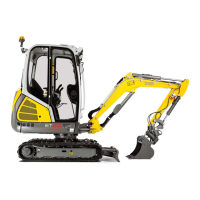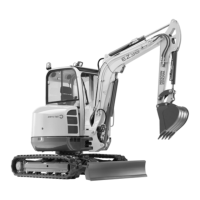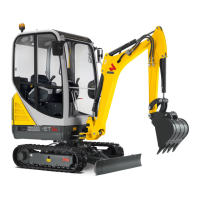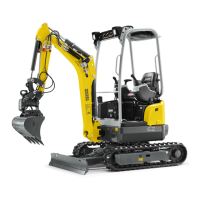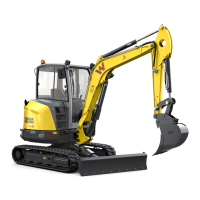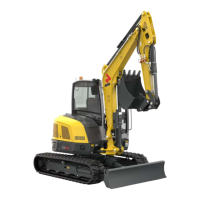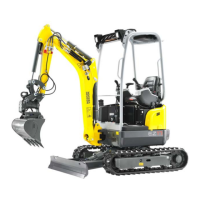3-70 BA 50Z3/6003 en – Edition 4.3 * * 5003b330.fm
Operation
Incorrect crane-handling of machine –
Risk of accidents.
☞ Wear protective equipment (safety boots, protective gloves, hard hat, etc.).
☞ Before raising the machine, ensure that:
• all instructions under “Crane handling the machine” have been followed.
• the machine is accessible and not stuck.
• the lifting gear has been attached correctly.
• there is no-one in the machine.
• the loading area is sealed off and that there is no-one in it.
• the weather conditions make it possible to load the machine safely
(wind, visibility, etc.).
☞ Always stay clear of suspended loads.
☞ It is essential that you follow the safety instructions at the beginning of this
chapter and any other safety instructions relevant in your country.
☞ Check the cab for damage.
Do not crane-handle malfunctioning machines with leaks.
• Read and follow all instructions indicated before.
• Safely lock the attachment.
• Empty or clean and remove the attachment.
• Remove all dirt from the machine.
• Place the machine on firm, level and horizontal ground.
• Raise the boom completely.
• Pull the stick toward the machine.
• Move the attachment inward.
• Raise the stabilizer blade.
• Position the boom straight ahead at the centre of the machine.
• Stop the engine.
• Operate the joystick repeatedly to release the pressure in the hydraulic system.
• Raise the control lever base.
• Remove the ignition key and carry it with you.
• Remove all loose objects from inside the machine.
• Close the windows and doors.
• Leave the cab.
• Close and lock all covers.
• Install the lifting gear at the point on the boom provided for lifting the machine.
• Install the lifting gear at the points on the stabilizer blade provided for lifting the
machine.
• Slowly raise the machine until there is no more contact with the ground.
• Wait until the machine does not swing any more and is completely steady.
• If the balance and the condition and position of the lifting gear is correct, slowly raise
the machine to the required height and load it.
Fig. 151: Craning operation
L1
L2

